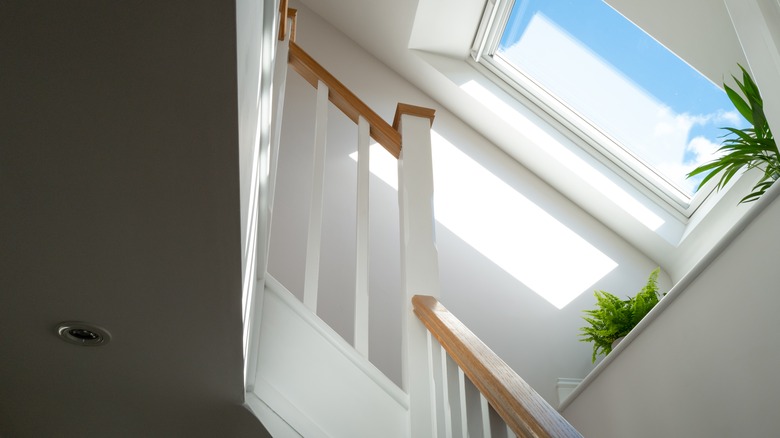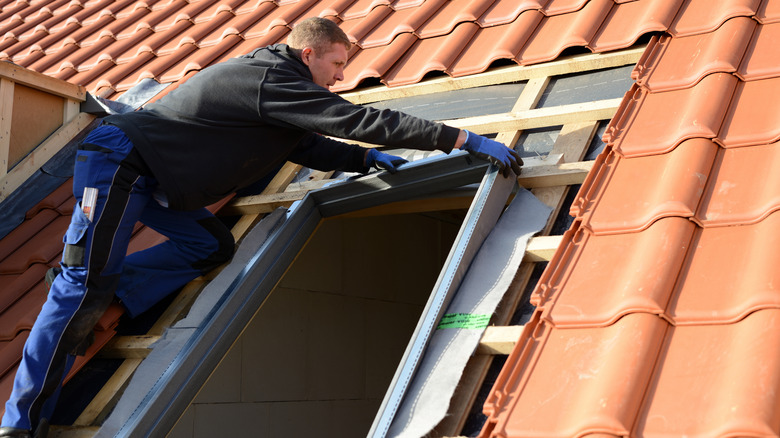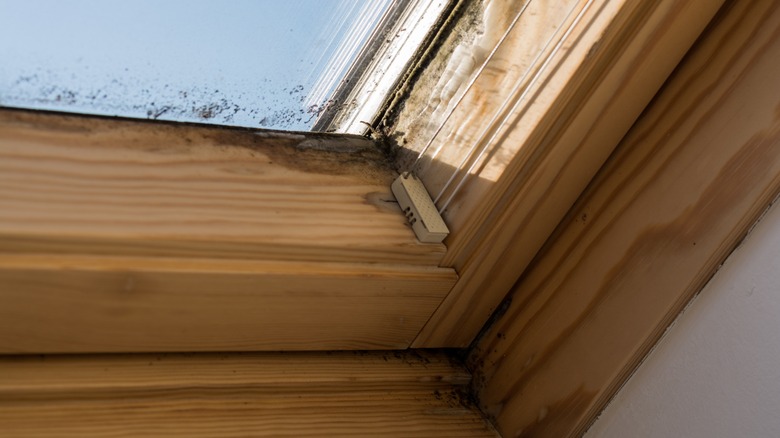The Reason Replacing A Skylight Is So Ridiculously Expensive
Skylights are a wonderful asset to have in your home, giving a more holistic vibe to your living space with natural light from above. They also provide a window to the outside world that is totally private, unlike windows on the sides of your home, which can be more invasive (if you love the idea of a rooftop window, research if a skylight is right for your home). While skylights are usually well-received when situated in a home, most Americans do not expect to see one. It may, therefore, come as a shock to learn that replacing a skylight can cost anywhere from $800 to $2,400. With such a high price, you are likely wondering why this is such an expensive ordeal. The truth is that it comes down to a number of factors.
In Europe, skylights are widely loved, as they convert dead space, like attics, into usable living space; in America, they are less common in homes, which is at least one of the many factors contributing to their costliness. Additionally, skylights are expensive because of the materials required to build them. Given that skylights are situated on your roof, they need to be capable of keeping out the elements that will pummel them consistently for years. Finally, paying for skilled skylight installers is going to be pricey, as it is a niche market. Skylight installers are professionals who will bring their specific expertise to the job — and you'll pay top dollar for it.
Features you'll pay extra for
Skylights, like most things, have more bells and whistles today than they did before; if it's been a decade or longer since you got your first skylight, you may be surprised by the options on the market. Once simply panes situated on the roof to let sunlight in, today, many skylights have capabilities like venting, built-in shades, and UV blocking, offering you more customization as you consider replacing your current skylight. You can also shop around at hardware stores like Home Depot or Lowe's to find the best deals on skylights.
Some features worth considering shelling out extra money for include double glazing, automatic closing, and remote control capabilities. Double glazing (or double paned) is essentially a stronger glass, which will help to keep that annoying condensation at bay, in addition to providing more insulation from the outside world. While acrylic glazing materials cost $150 to $1,000, a double-paned skylight can be as much as $300 to $3,500. Automatic closing is a fancy-seeming but highly useful feature: it provides you an immense amount of relief for those moments when the weather quickly turns sour, and you fail to close the skylight. This feature can truly be a lifesaver by preventing the accumulation of water in your home. A remote control is an obvious win for skylights positioned far from your reach and will save you the trouble of climbing up on a ladder or stool to open or close them.
Signs you need to replace your skylight
Skylights need to be replaced from time to time, but a properly installed, quality model should last 8 to 15 years. If you happen to install a newer skylight with better technology — VELUX brand, specifically — you may get anywhere from 20 to 30 years with it prior to replacement. Whatever your current model, there are a number of signs to look out for that will clue you into the need to replace your skylight (utilize these tips for easily cleaning your skylight and use the process as an opportunity to inspect it up close for any defects).
If you notice any condensation forming on the skylight, it may be a hint that the glass is not permitting moisture to evaporate. Cracks on the glass are also a clear sign that your skylight needs to be inspected, if not completely replaced (you don't want to wait until the crack expands). Should you see staining around the skylight, this is a clear indicator that the skylight is allowing water in around the glass, which can lead to more significant problems down the road if not addressed quickly. Even if these signs are not visible to you, it is still in your best interest to have your skylight inspected annually; this will give you a head start on any issues before they cause any worse outcomes.



